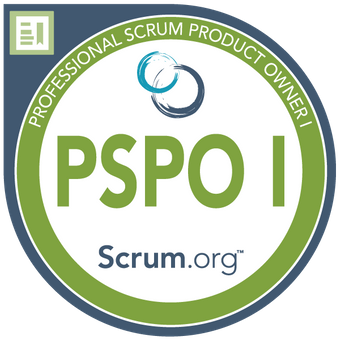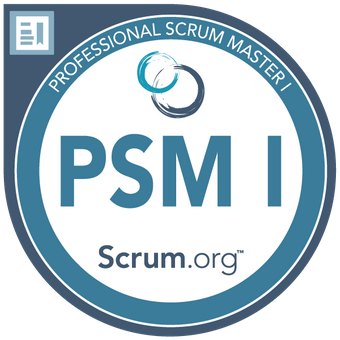Key Concept
Applying design thinking as an agile method and structured process, user-centered innovation becomes a systematic reality where teams deliver creative outcomes and have fun doing so!
Design Thinking Sprints
Creative Team Innovation
Design Thinking simply explained
What is it? Design Thinking is a systematic process for generating creative product and service ideas. The purpose is to design user-centered innovative products and services orientated on the insights collected in conversations with the end-user or potential customer. Design Thinking consists of five phases: understanding, problem definition, idea generation, prototyping and testing.
Duration?A Design Thinking Cologne basic workshop is 2 days. A Sprint 4-5 days
Remote? Yes! Virtual Design Thinking workshops are possible with Miro or Mural
For how many? A team of 6–10 people is optimal.
What’s in it for me? Design Thinking is used at the beginning “fuzzy front-end” of an innovation process to uncover real customer needs. These needs or pain points provide the data that drive and guide the innovation process. Changes in customer behavior are integrated into the cycle (iteration) of development, which greatly increases current business value and potential customer satisfaction.
Impressions




Design Thinking
Team collaboration is effective where traditional planning and management tools are no longer enough to address the needs of our complex, ever-changing digitalized world. Design Thinking offers with attitude, process, mindset and tools a future-oriented problem-solving approach for companies that understand product and service development as a learning journey.
Design Thinking leads to innovation in products, services or even new business models. By structurally questioning the seemingly obvious, Design Thinking interdisciplinary teams create new, meaningful solutions that meet human needs and generates business value. The Design Thinking Cologne process consists of five phases: understanding, problem definition, idea generation, prototyping and testing.
Interviews
Karla Schlaepfer Cologne in an interview with Creative NRW
What advice can you already give creative players and companies?
“Just do it. Start before you're ready and before things are perfect. I would create small innovation hotbeds as quickly as possible. A ‘safe’ space where you can experiment and test out new beta ideas.”
“Fascinating …
“Fascinating… in how little time and with how few resources you can come up with great, creative ideas! The Design Thinking Workshop was a real eye opener.”
My Book
Have a look at my e-book “Design Thinking? Ask Me Anything!” (in German) here!
In her eBook "Design Thinking? Ask me anything", author and Design Thinking expert Karla Schlaepfer explains the innovative, agile and customer-oriented strategy. This is a process for solving complex problems in a practical, structured way. Her book too is quite practical with case studies, tips and many examples.
More on das-dynamische-unternehmen.com

Descriptive and compact
“This E-book on Design Thinking describes the method quite vividly and concisely. Anyone can easily find out for themselves if he/she wants to use the approach. The practical examples are very helpful for orientation.”
Design Sprint Master

Case Study: Deutschlandfunk Sprint
Get in Touch
Do you have questions how Design Thinking can work for you and your team? Make a complimentary consultation appointment and we’ll talk!
Agile working with Scrum
Learn faster, be more efficient and effective
In a Nutshell
What is it? Agile working and Scrum are very structured forms of collaboration. They are based on the following essential elements:
- A clear goal or deliverable
- Work in short time intervals (Sprint)
- Direct involvement of the customer
- Small and self-organized teams
- A high value orientation
Duration? Agile Coaches accompany Scrum teams for 2–3 months or longer. Introductory workshops usually last 1–2 days.
Remote? Yes! Online trainings, workshops and Scrum events can be carried out by professional digital facilitation online using virtual whiteboard tools.
For how many? A Scrum Team of 5–7 people is ideal.
Why and what is the goal? We live in a time of constant change and complexity. Agility means the ability to adapt to these changes quickly. Important aim for agile teams is to be self-organized, to constantly strive to optimize, to achieve products with high customer value and ROI in short sprints.
Are you ready for? Agile Project Management with Scrum and Agile Leadership
Golden Gate Bridge
To work and lead in an agile manner requires both flexible, and new agile practices, as well as leaders who support their employees in becoming more autonomous and taking on more responsibility.
Often values and principles need to be redefined and brought into line with the Agile Manifesto. The Agile Manifesto is one of the essential milestones of the modern agile movement. It provides understanding and orientation for agile working. This is also the case with Scrum, Kanban and XP.
Scrum (the name is derived from rugby and is used to resume the game) is a framework and procedure model for project and product management, especially for agile software development. It was originally developed for and by software engineers. An agile organization is, in very simplified terms, a people-driven enterprise in which teams collaborate and products (or processes) are developed using an incremental scrum Sprint process and where the creation of value is set as the measure of success.
Badges
Start your digital transformation today! Karla Schlaepfer is a certified Scrum Master + Product Owner


Self-Organization
What is self-organization and why is it so important?
Here are 5 dimensions of self-organisation:
- Purpose makes sense – Inspiring goals for all.
- Autonomy and responsibility – Strengthening ownership in the team.
- Fluid networking – Developing and maintaining Agile Structures.
- Accelerated learning – In the team and for the customer.
- The power of culture – Values and dialogue-oriented communication.
What does the Scrum Master do?
The Scrum Master is responsible for promoting and supporting Scrum. Scrum Servant Leadership Masters do this by helping everyone in the company to understand and implement the Scrum theory, practices, process, rules and values.
Karla Schlaepfer has a skill set with deep knowledge of change processes and human-centered innovation methods (Design Thinking and Design Sprints). Her competencies as a Design Thinker, Professional Coach and Scrum Master put her in the very special position of being able to integrate her long experience into a diverse selection of methods along the entire innovation process. The combination of these qualifications is unique on the market.
Testimonial
“Once again, thank you very much for the exciting workshop! The practical examples have shown well how agile strategies can be applied and will be helpful for the implementation in everyday life, which we will now tackle.”
Get in Touch
Interested? Let’s talk about your special wishes for agility!